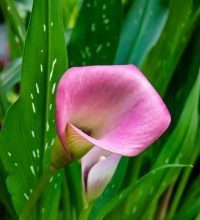Slugs in the Garden: What are they and How Can We Fight Them?
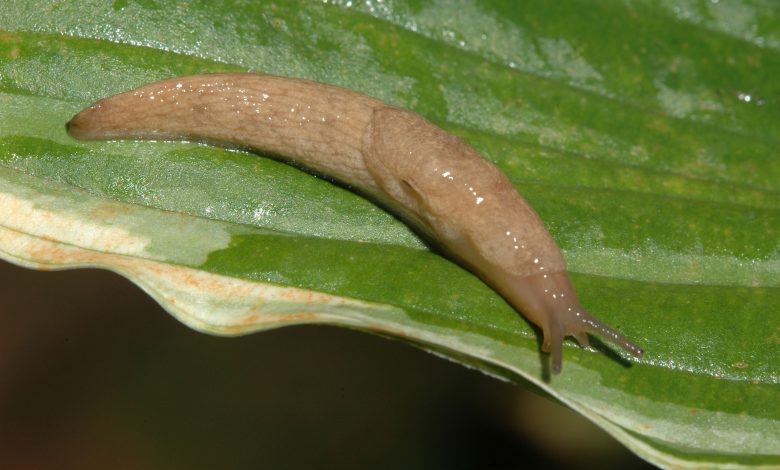
What will you learn in this article?
- What are slugs? Slug, or land slug, is a common name for any apparently shellless terrestrial gastropod mollusk.
- Are slugs and snails the same thing? They look a lot alike, but unlike snails, which have a large, prominent shell, slugs either don’t have this defense or have small internal shells.
- How can slugs affect our garden? Slugs cause a lot of damage to plants, because they are capable of completely digesting their tissues; with their toothed tongue in the shape of a file they devour stems, roots, leaves, bulbs, flowers and fruits alike.
- How can we avoid slugs? In this article, below we show you different methods.
- How can we repel them? There are natural methods and chemical methods. Below we explain the advantages and disadvantages of each of the different methods.
What are slugs?
Definition: Slugs are garden pests that live in humid climates, so it will be very common to find them in the garden during the rainy season.
They are white-bodied molluscs of the order Pulmonata without shells or with small internal shells, unlike other pests that are insects.
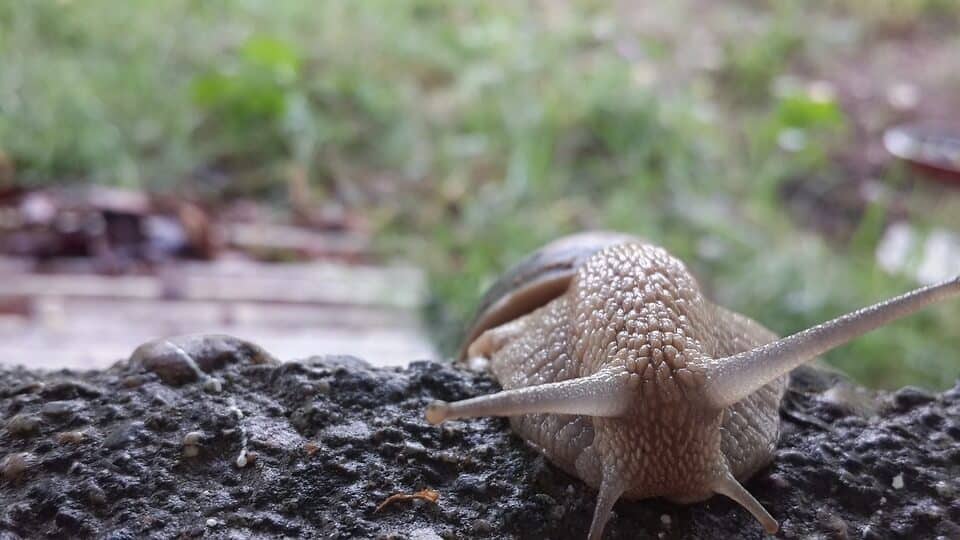 Slugs are from the same family as the giant squid, but, unlike other mollusks, they have only one lung.
Slugs are from the same family as the giant squid, but, unlike other mollusks, they have only one lung.
The head has four antennae and a mouth; the upper antennae carry eyes at their ends, which also serve as tactile and olfactory organs.
The mouth has two jaws with small teeth and a serrated tongue.
It has a shell that covers only a very small part of the body, and it is hermaphrodite, that is, it has both male and female reproductive organs.
They can measure up to 15 centimeters and their dark color allows them to blend in with the ground, making them difficult to locate.They feed at night and hide during the day.
However, they leave a trail of slime where they pass; a slimy trail that you can easily identify to follow their tracks.
The word slug is also often used as part of the common name for any gastropod mollusk that has no shell, a shell, or only a small internal shell, particularly sea slugs and semi-sea slugs (this is in contrast to the common name snail, which applies to gastropods that have a coiled shell large enough to fully retract their soft parts into the shell).
What species do slugs belong to?
Several taxonomic families of land slugs are part of very different evolutionary lineages, which also include snails.
Thus, the various families of slugs are not closely related, despite a superficial similarity in general body shape. The condition of not having a shell has arisen independently many times during the evolutionary past, so the category «slug» is polyphyletic.
Are slugs and snails the same thing?
They look a lot alike, but unlike snails, which have a large, prominent shell, slugs either don’t have this defense or have small internal shells.
How can it affect our garden?
Slugs cause a lot of damage to plants, because they are capable of completely digesting their tissues; with their toothed tongue in the shape of a file they devour stems, roots, leaves, bulbs, flowers and fruits alike.
They feed on anything they find in the garden, but have a particular fondness for lettuce, beans, tomato, and cabbage.
They are dangerous predators because they destroy young plants, but they also leave mucous secretions that make it impossible to sell plants that have not been destroyed.
They act at night, so in the morning you will find a trail of destruction accompanied by silvery secretions that will leave you in no doubt about the identity of the material author of the damage.
But, in addition, the slugs are the cause of an infection known as angiostrongyliasis, which produces tremors, pain and inflammation and can cause death.
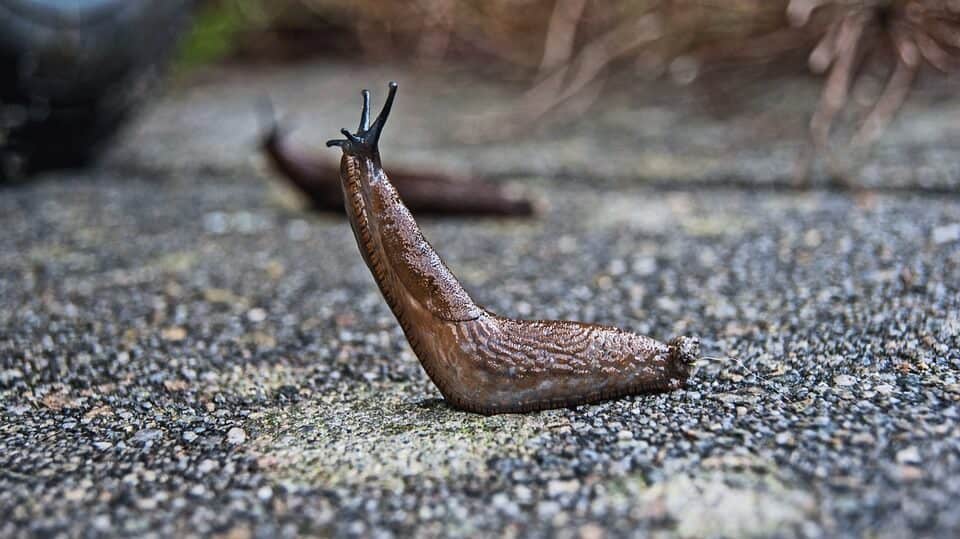 This disease is spread by the rat lungworm. When rats defecate worm larvae, they infect other species, such as snails, slugs, and freshwater shrimp.
This disease is spread by the rat lungworm. When rats defecate worm larvae, they infect other species, such as snails, slugs, and freshwater shrimp.
The first reference of this disease dates from Taiwan in 1944, but more recently, in 2017, six cases were reported in Hawaii. The authorities have warned the population not to touch the slugs with unprotected hands, for this reason.
The parasitic disease begins by attacking the lungs, then the blood, and finally the brain, which can cause meningitis.
This zoonosis has already reached other regions of the United States, as cases have been known in Louisiana, California, Alabama and Florida.
In Spain there have been alerts regarding this disease and the fact that slugs can cause it, because no remedy is known to deal with it successfully.
Identify slugs in our garden
There are mainly four types of slugs that usually attack orchards and agriculture in general:
- Land snail (Helix aspersa Muller) (Gastropoda: Helicidae).
- Small gray slug (Deroceras reticulatum Muller) (Gastropoda: Limacidae).
- Bicolor field slug (Deroceras laeve Muller) (Gastropoda: Limacidae).
- Large garden slug (Limax maximus L.) (Gastropoda: Limacidae).
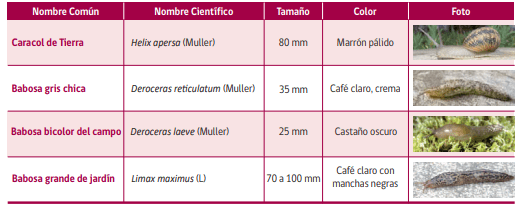
Because they are nocturnal, the damage to plants caused by their feeding occurs at night, for this reason the pest is not seen during the day.
However, one can infer that the damage was the product of an attack by slugs or snails by detecting in the morning the bright stripes left by the slime during the sliding of these molluscs at night.
The intensity of the damage, and as in phytophagous insect larvae, will depend largely on their population density, as well as on the stage of development of the plants, and may cause death in seedlings in their early stages of development..

Evidence of damage in more developed plants can be seen on the edges of the leaves by holes of different sizes (along with the stain caused by pest slime).
In autumn -winter, the damage caused by the feeding of these molluscs can be lethal in established orchards.
Although there are chemical baits that successfully control these pests, they can be of high risk to natural enemies, farm animals or pets, as well as to humans.
Source: https://biblioteca.inia.cl/bitstream/handle/123456789/67056/NR42400.pdf?sequence=1
How can we avoid slugs?
There are many ways that horticulturists deal with this little enemy that causes many of their headaches.
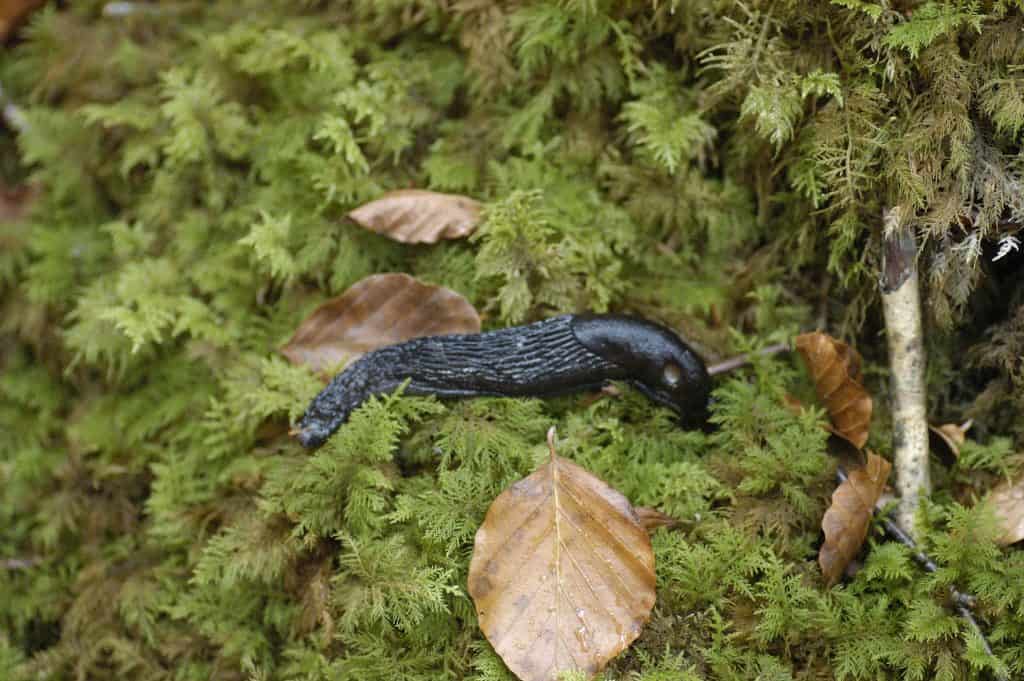 From laying copper wire (which acts as a repellent), to traps with beer containers, are the strategies used by them against the plague.
From laying copper wire (which acts as a repellent), to traps with beer containers, are the strategies used by them against the plague.
It is also practical to spread lettuce leaves, spinach, cabbage or raw potato slices in the garden.Slugs tend to hide under these vegetables, so the next morning you can pick them up and dispose of them (with gloves!).
frogs and toads they are slug eaters, as are chickens and ducks.
Lime, coffee, garlic, sand are equally useful to combat this plant predator.
You can put tiles on the garden floor, as the slugs will be protected under them and you can easily remove them.
Whatslugs love beer,put some in a container, that way they will choke to death when they try to drink it.
Another formula consists of dipping a cloth with beer and placing it strategically in the garden, in the certainty that the slugs will reach it and stay there.
How can we repel slugs?
use copper
Slugs and copper don’t get along;therefore, the best way to repel them is to place a fence of copper tape around the plants.
The reason for this «disparity of criteria» is that copper causes cramps in slugs.
Eggs and ashes are excellent repellants, because slugs don’t like them at all, which is why they won’t come near your garden.
potassium soap
Potassium soap is another quite natural tool that usually repels this pest.
If you want to know more, see our article on potassium soap.
Plant desirable plants away from the garden
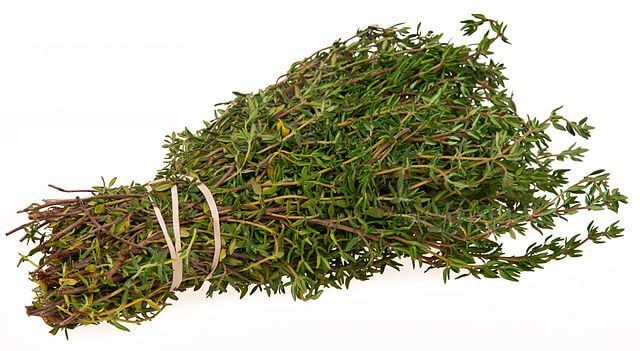 Another way to keep this pest away from the most valuable plants in the garden is toplant away other complementary plants that are appetizing for her.
Another way to keep this pest away from the most valuable plants in the garden is toplant away other complementary plants that are appetizing for her.
Chervil, marigold and thyme are three of the species that slugs rave about.
Subsequently, proceed to destroy these infected plants along with the origin of the evil.
Chemicals (we do not recommend them)
Chemicals to combat slugs are metaldehyde or methiocarb.
These products must be watered on the ground, near the plants, very carefully, because they can be harmful to humans, especially children.
The slugs will not go near those places that have been watered with these products, and if they do, they will die trying.
If you have access to seaweed, place it around the plants. The presence of salt in the composition of the algae is something that the slugs hate so they will not go near it.

electronic fence
An electronic fence can also be placed, which is one of thethe most successful repellentsthat are known against slugs and other predatory insects.
The electronic fence is a nine-volt battery- operated barrier that produces a mild static sensation, making it undetectable to humans or pets.
But, above all things, the best prevention against these little animals is to water the plants in the morning, not in the afternoon or at night, because that way the soil will be dry at night, which is when the slugs come out to do of theirs.
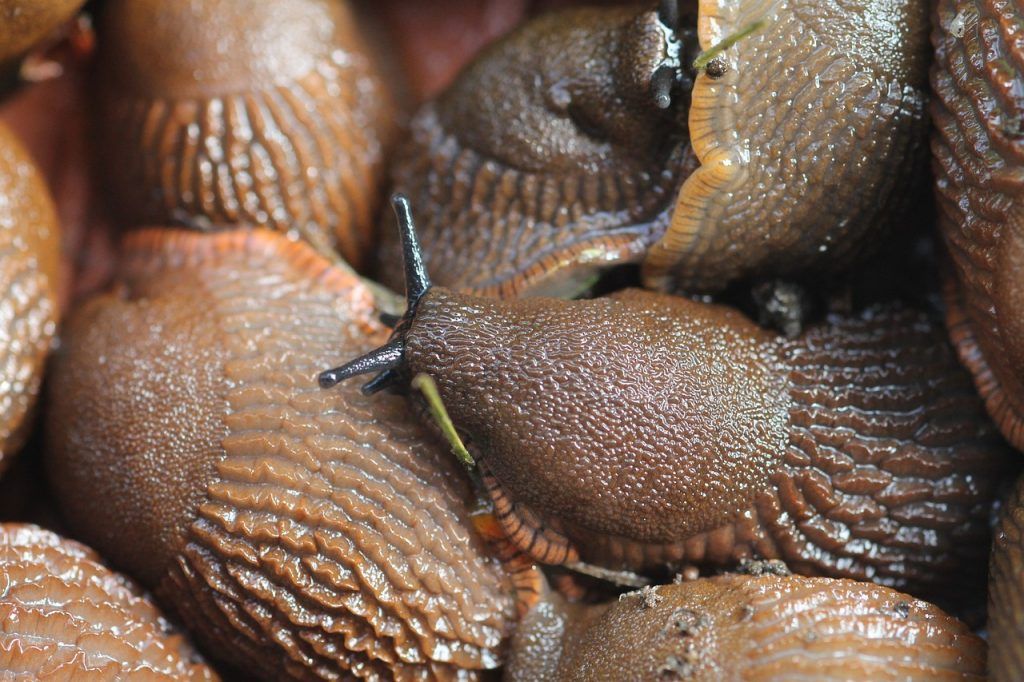
slug anatomy
The external anatomy of a slug includes the following elements or characteristics:
Tentacles or antennae
Like other land-lunged gastropods, most land slugs have two pairs of «antennae» or tentacles on their heads.
The upper pair is light sensitive and has eye points at the ends, while the lower pair provides the sense of smell. Both pairs are retractable.
Mantle
On top of the slug, behind the head, is the saddle-shaped mantle, and below this are the genital opening and anus.
On one side (usually the right) of the mantle is a respiratory opening, which is easy to see when open but difficult to see when closed. This opening is known as a pneumotome.
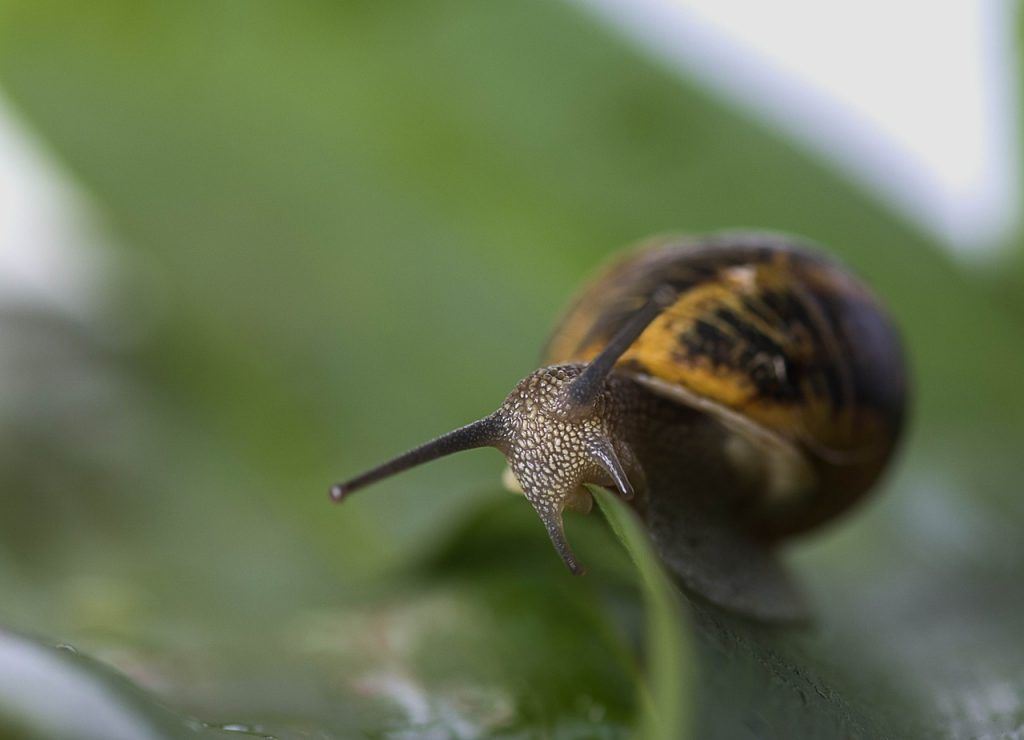
Tail
The part of the slug behind the mantle is called the ‘tail’.
Keel
Some species of slugs, for example the Tandonia budapestensis, have a prominent ridge running down the back of the middle of the tail (sometimes the entire length of the tail, sometimes just the tail end).
This ridge is called a «keel.»
Foot
The bottom of the slug, which is flat, is called the «foot.» Like almost all gastropods, the slug moves by rhythmic waves of muscle contraction on the bottom of the foot.
At the same time, it secretes a layer of mucus that it rides on, helping to prevent damage to the tissues of the foot.[3] Around the edge of the foot in some slugs is a structure called the ‘foot band’.
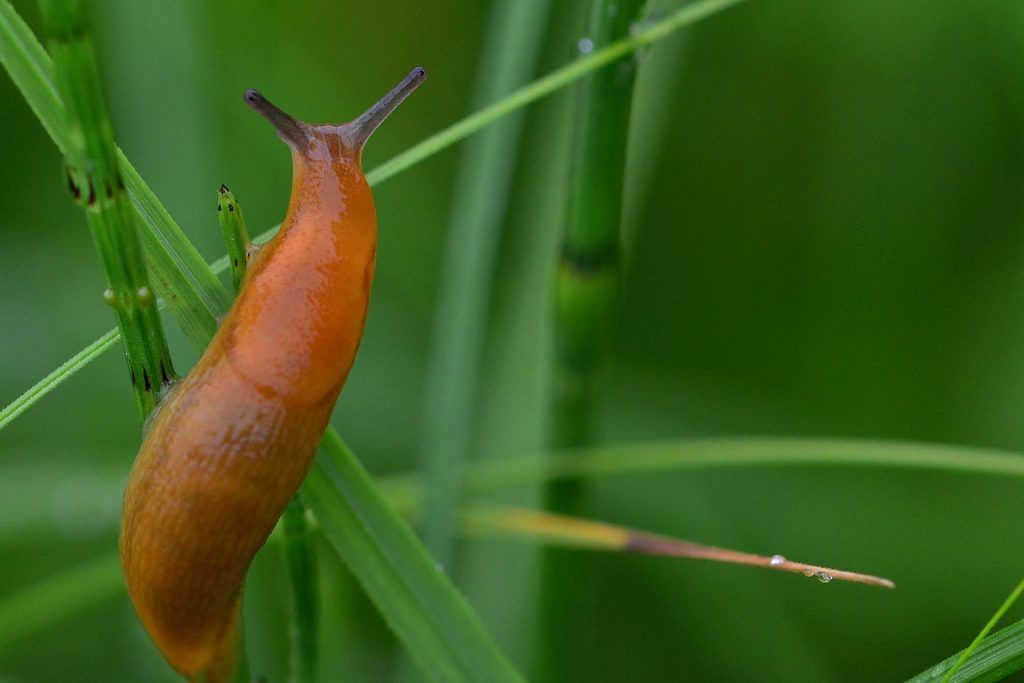
vestigial shell
Most slugs retain a remnant of their shell, which is usually internalized. This organ generally serves as a storehouse for calcium salts, often in conjunction with the digestive glands.
An internal shell is present in the Limacidae and Parmacellidae.
Adults of the Philomycidae, Onchidiidae, and Veronicellidae lack a shell.
How do slugs reproduce?
Slugs are hermaphrodites, as they have both male and female reproductive organs.
Once the slug has located its mate, they circle each other and exchange sperm through their protruding genitalia. A few days later, the slugs lay approximately thirty eggs in a hole in the ground, or under the cover of an object such as a fallen log.
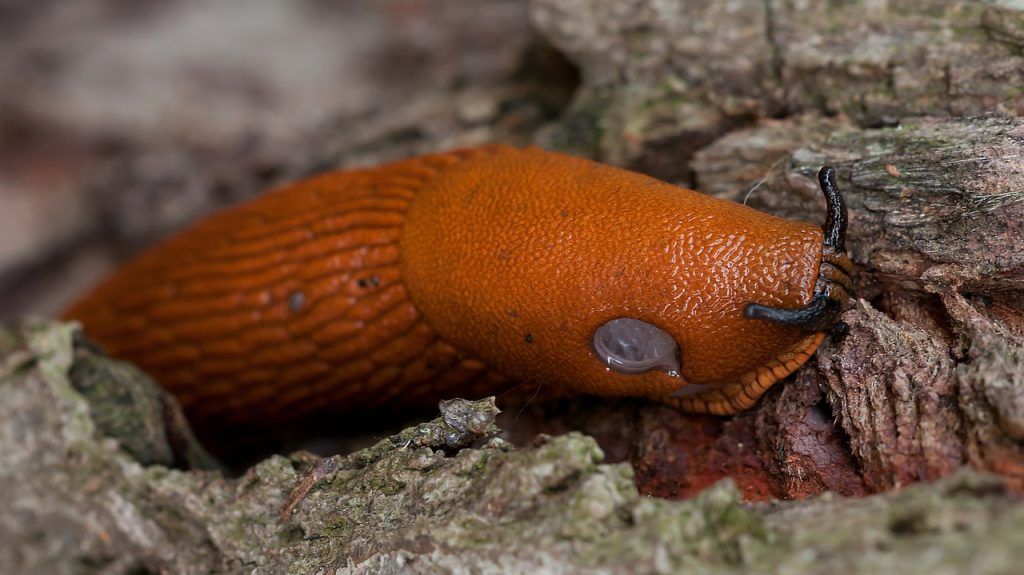
Did you know…?Apophalation has only been recorded in some species of banana slugs (Ariolimax) and in one species of Deroceras.
In banana slugs, the penis is sometimes trapped inside the body of the partner. Apophalation allows slugs to separate by chewing on another subject’s penis or their own.
Once the penis has been discarded, banana slugs are still capable of mating using only the female parts of the reproductive system. Amazing, right?
slug behavior
When attacked, slugs can contract their body, becoming harder and more compact and more still and round.
In this way, they adhere firmly to the surface. This, combined with the slippery mucus they produce, makes the slugs more difficult for predators to grab. The unpleasant taste of mucus is also a deterrent.
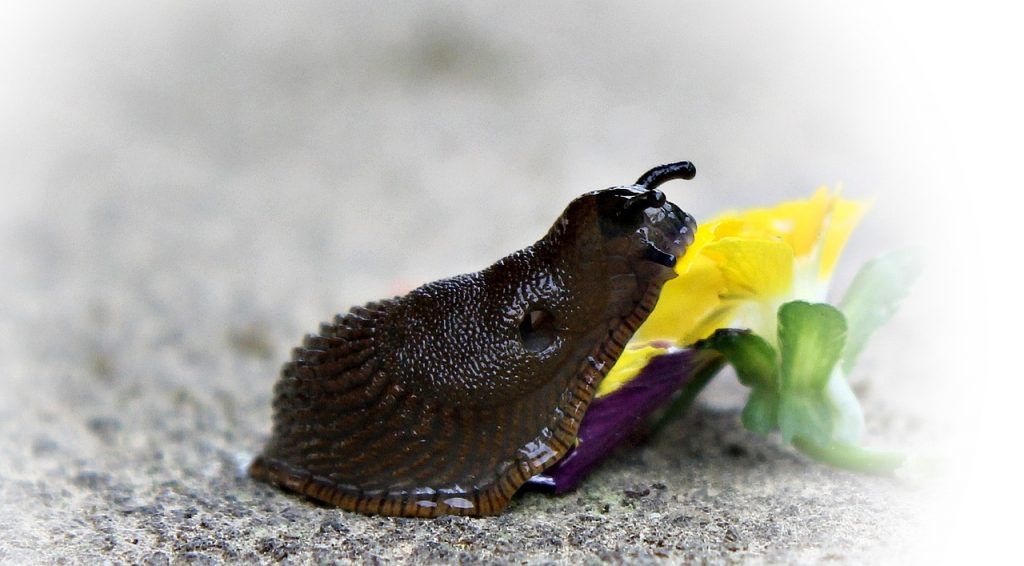
Slugs can also incapacitate predators by producing a very sticky and stretchy mucus that can trap them in its secretion.
Some species exhibit different behaviors when attacked, such as the Kerry slug. In contrast to the general behavior pattern, the Kerry slug retracts its head, releases the substrate, rolls up completely, and remains shrunk into a ball.
This is a unique feature among all Arionidae, and among most other slugs. Some slugs can self-amputate (autotomy) a part of their tail to help the slug escape from a predator.
Some species of slugs hibernate underground for the winter in temperate climates, but in other species, the adults die in the fall.
Intra- and interspecific agonistic behavior is documented, but varies greatly between slug species. Slugs often resort to aggressiveness, attacking both conspecifics and individuals of other species when they compete for resources.
This aggressiveness is also influenced by seasonality, since the availability of resources, shelter and food can be compromised by climatic conditions.
Slugs are likely to attack during the summer, when resource availability is low. During winter, aggressive responses are replaced by gregarious behavior.
References and bibliography
- [BOOK] Snails and Slugs, J Cadevall, A Orozco – 2016 – researchgate.net
- [HTML] Control of slugs (Deroceras reticulatum Müller) with Phasmarhabditis hermaphrodita Schneider (Nematoda: Rhabditidae) in soils with a zero system … A France, M Gerding, C Céspedes, M Cortez – Agriculture Technique, 2002 – scielo.conicyt.cl
- [PDF] Identification keys for the slugs (Naked Lungs) of Catalonia,MR Alonso, M Ibañez, M Bech – Miscel lania Zoològica, 1985 – raco.cat
- [BOOK] The Slugs, J Willis – 2017 – books.google.com
- [PDF] Management of slugs in zero tillage, A Aguilera – Tierra Adentro, 2001 – library.inia.cl
- [PDF] Agroecological management and control of slugs and snails in vegetable gardens, E Vallejos, S Vargas – INIA Remehue Technical File, 2020 – library.inia.cl
- [PDF] Agroecological management of shellfish, MM Torres – researchgate.net

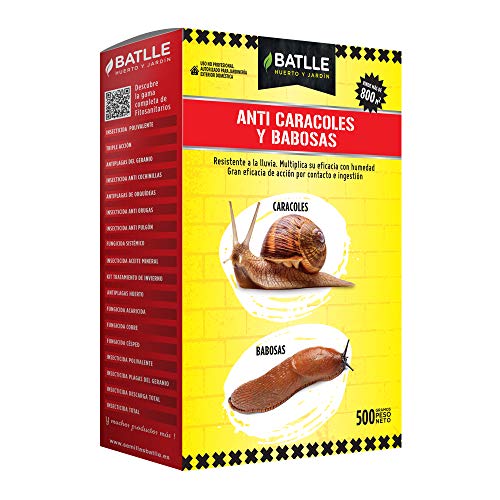
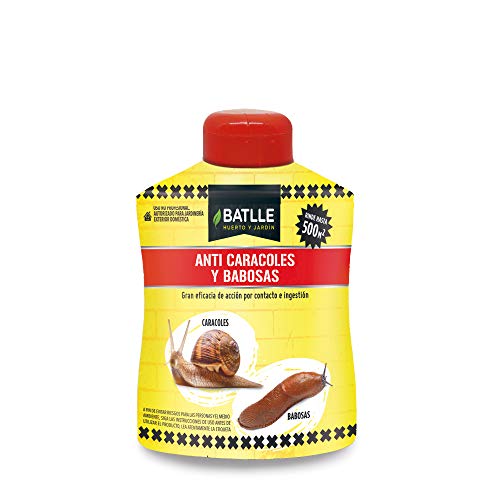
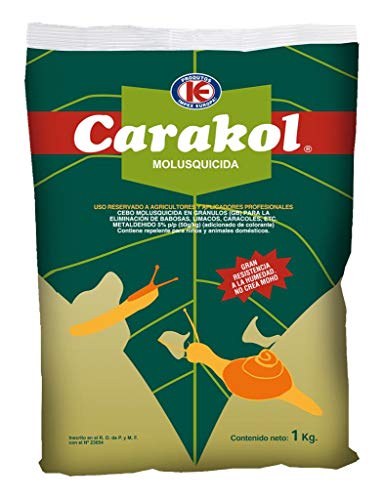
![Photo of Jupiter Tree: [Cultivation, Irrigation, Care, Pests and Diseases]](https://www.complete-gardening.com/wp-content/uploads/2022/08/jupiter-tree-cultivation-irrigation-care-pests-and-diseases-390x220.jpg)

![Photo of Jade Plant: [Cultivation, Irrigation, Associations, Pests and Diseases]](https://www.complete-gardening.com/wp-content/uploads/2022/08/jade-plant-cultivation-irrigation-associations-pests-and-diseases-390x220.jpg)
